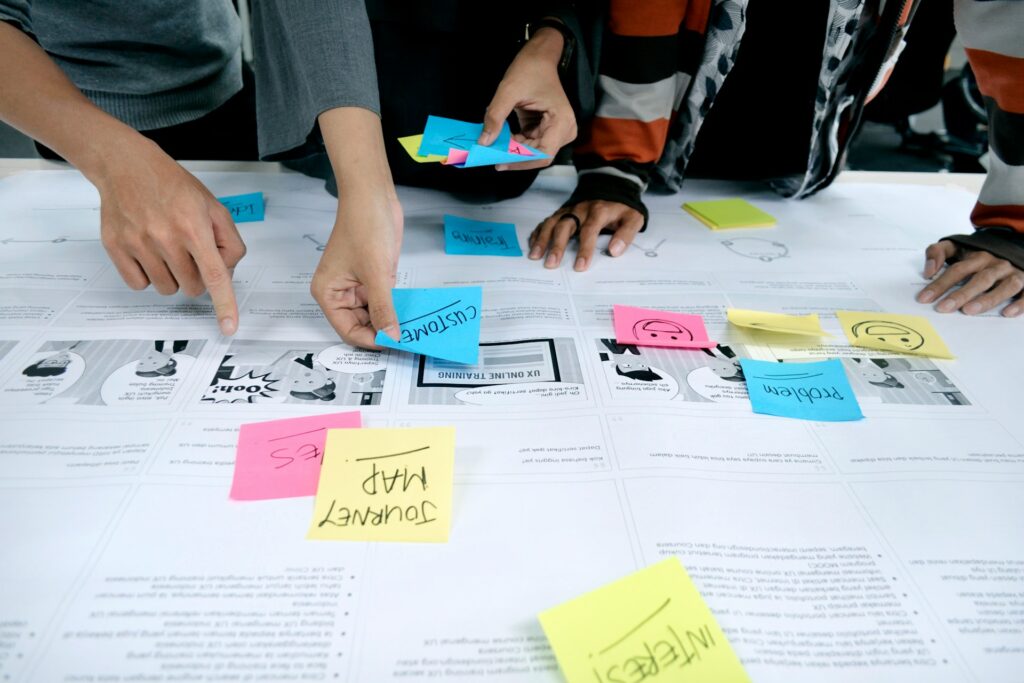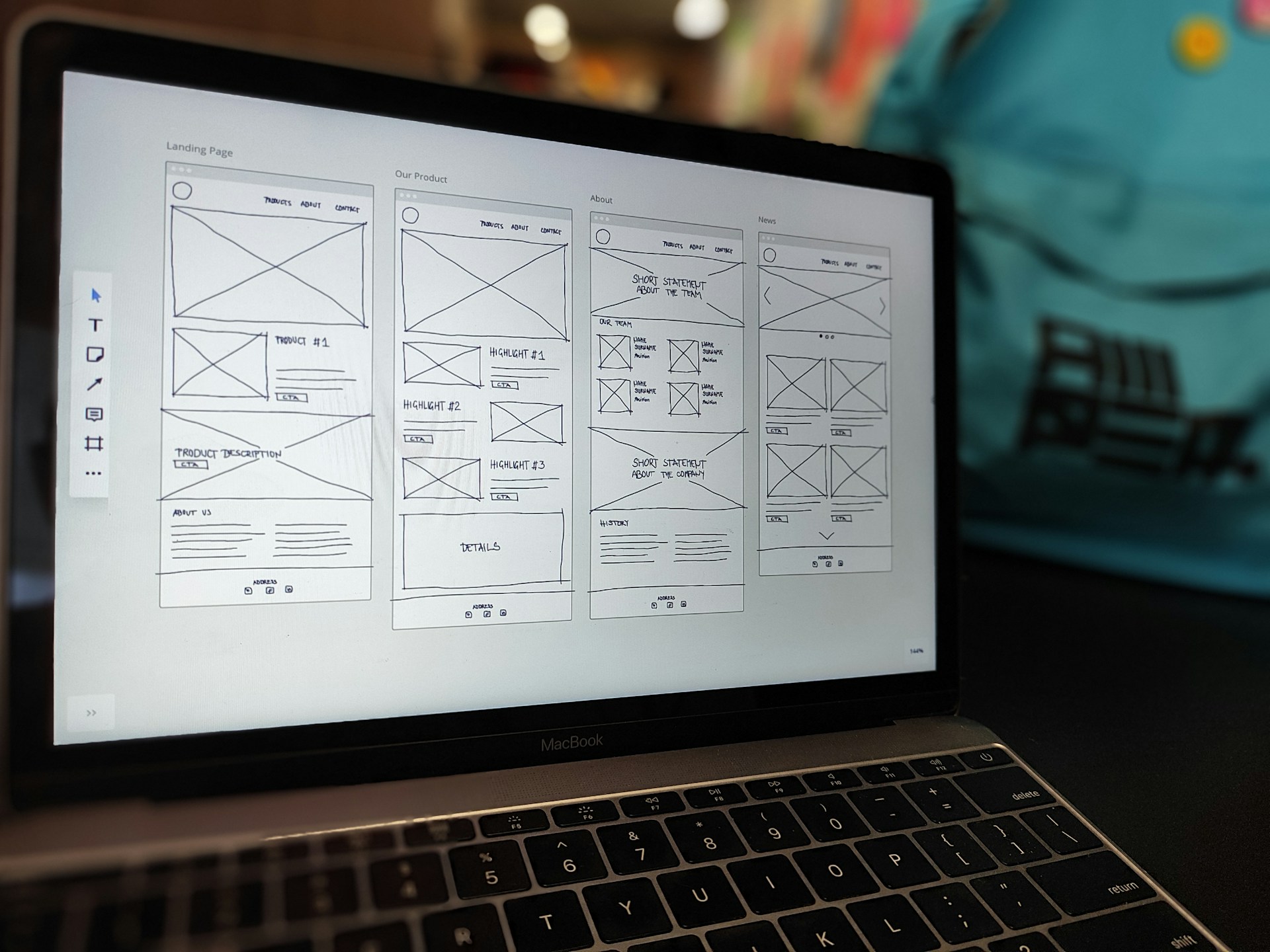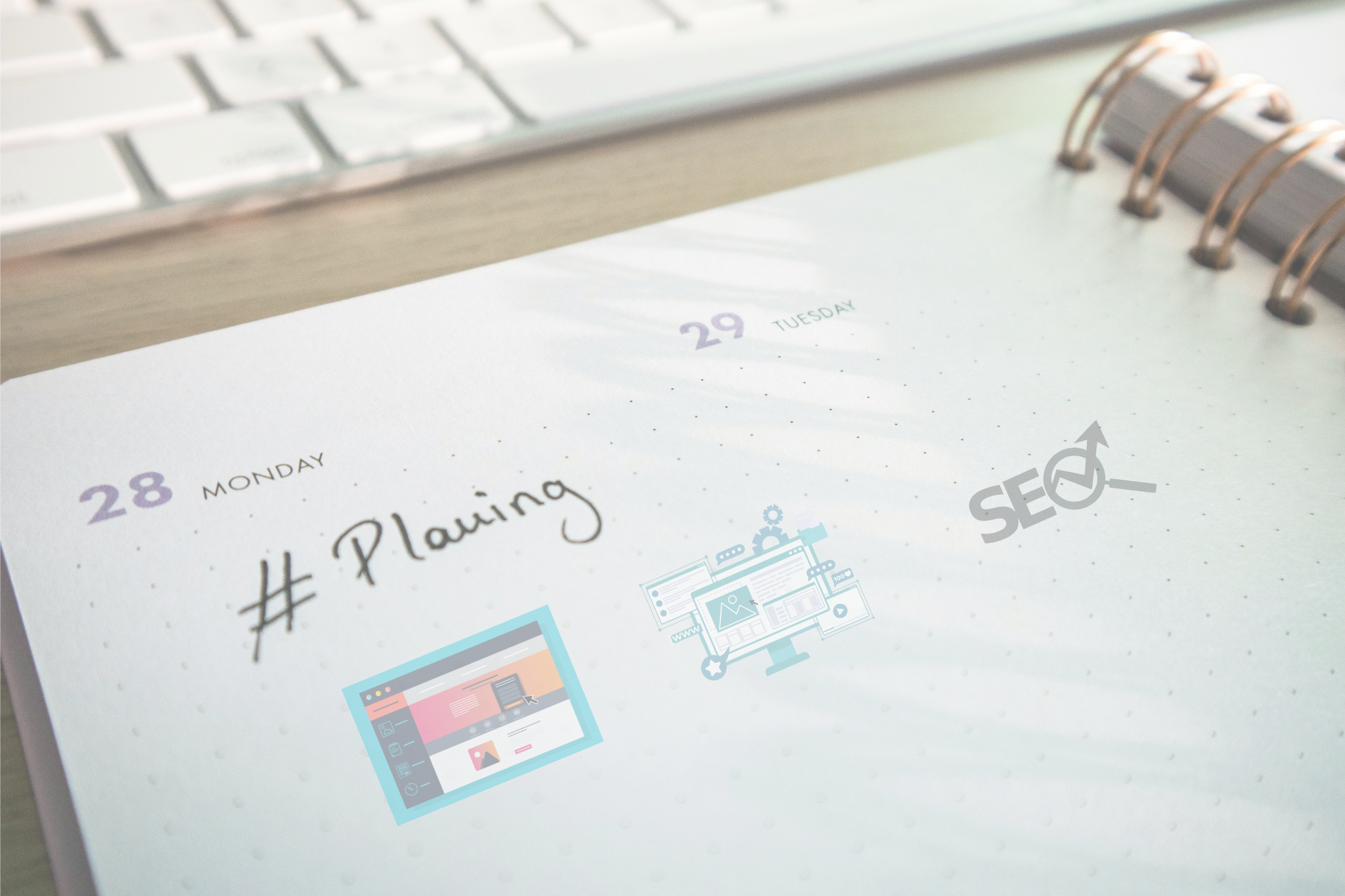Consciously Designing the User Journey on Your Website
I’m sure you’ve experienced that feeling when you visit a website, and everything is in perfect harmony. When you can easily find what you’re looking for, interactions are smooth, and the entire online interface radiates a sense of calm and confidence, guiding you almost invisibly. You don’t even notice how much time you’ve spent there. This is no accident. Behind such a harmonious digital presence lies conscious design, at the heart of which is the user journey – that intuitive path you guide your visitors along.
But what does this mean exactly in practice? How can you set this subtle, internal compass so that your visitors, instead of just clicking through, become engaged prospects and then returning, loyal clients? How does a simple online encounter transform into a deeper, genuine connection?
In this post, I don’t want to repeat the well-worn, general principles you’ve heard countless times. Instead, I want to share with you some lesser-known, yet highly effective strategies, psychological considerations, and subtle design tools that can transform your website’s user journey into a true experience and contribute to building lasting client relationships. We’ll examine the depths of this topic from various perspectives, so you too can confidently and consciously shape the User Journey that best reflects you and your brand’s unique story.
Discover the Secrets of a Successful Website: The Art and Science of the User Journey
Deeper Understanding of the User Journey: More Than Just a Route
When a visitor arrives at your website, a complex process begins that goes far beyond a simple series of clicks. This process, which we call the user journey, represents the entire “digital voyage” a potential client undertakes: from the first impression, through information gathering and consideration, all the way to achieving the desired goal (be it making contact, purchasing, or committing), and even including subsequent interactions. It encompasses all the steps, touchpoints, feelings, and thoughts that arise in the visitor during their online encounter with your brand.
Why is the conscious design of the user journey crucial for you?
A website’s task is to create a connection, build trust, and, alongside all this, gently guide the visitor. A consciously designed user journey helps precisely with this:
Builds Empathy: For this, it’s essential to deeply know your target audience, understand their perspective, motivations, and potential uncertainties. This is the foundation of all successful communication, allowing you to earn their trust and form a genuine connection with them.
Offers a True Experience: Along a well-thought-out path, the visitor not only easily finds what they’re looking for but also feels pleasant on the site, thanks to consciously designed elements and an intuitive structure. This positive experience is what can differentiate you from competitors and make your brand memorable.
Establishes Trust: If the user’s impression is that everything on the site is logical, transparent, and tailored to their needs, it significantly strengthens their trust and credibility in your brand.
The Invisible Components: Feelings and Thoughts at Every Step of the Journey
When designing the user journey, it’s important to consider what the visitor might feel and think at each stage. Do they arrive with excitement? Do they browse with curiosity? Do they feel uncertainty before making a decision? Are they relieved when they find answers to their questions?
The Psychology of First Impressions: It’s decided in seconds whether a visitor stays or leaves. The design, colors, main message, and website loading speed all contribute to this lightning-fast judgment. A harmonious, trust-inspiring, and professional first impression lays the groundwork for further positive interactions.
Creating the “Flow” Experience: When the user moves effortlessly and without obstacles on the site, and everything happens according to their expectations, they can enter a “flow” state. This positive immersion not only increases the time spent on the site and engagement but also registers as a pleasant memory for the visitor.
Conscious Support at Decision Points: Every user journey contains critical decision points where the visitor faces a choice. It’s important that at these points, they receive all necessary information (e.g., clear product descriptions, service details, prices) and encounter trust-building elements (e.g., client testimonials, guarantees) that help them move forward confidently, without becoming uncertain or frustrated.
A Tool for Deeper Understanding: The Subtle Use of the Empathy Map
-
- What Do They Think and Feel? (Says & Thinks): What thoughts, worries, hopes, feelings are swirling within them regarding their problem or your solution?
- What Do They Hear? (Hears): What information do they hear from their environment, friends, colleagues, or the media about the topic?
- What Do They See? (Sees): What visual stimuli do they encounter in their environment, in the market, from competitors?
- What Do They Say and Do? (Does): How do they behave publicly, what do they say to others, what concrete steps do they take?
Alongside these, it’s worth examining the user’s Pains – frustrations, obstacles, fears – and Gains – desires, needs, measures of success.
Completing such a map helps you get a much more nuanced picture of your target audience, allowing you to tailor the user journey, as well as your website’s content and design, to their real needs and feelings. This kind of empathy-based design is the foundation for building deeper, more human connections.

In the following sections, we will examine in more detail how this design process unfolds from the designer’s, developer’s, and marketer’s perspectives, and what concrete steps you too can take to perfect your own website’s user journey.
The Main Stages of the User Journey – The Subtle Interplay of Psychology and Strategy
To consciously guide your visitors through your website, it’s worth getting to know the typical stages they go through. These stages are not always sharply distinct, and their path is not always linear, but the model helps you understand their different motivations and needs. And in each stage, you can make your users’ experience even more effective and pleasant with subtle psychological tools and thoughtful solutions.
1. Awareness – Sparking Curiosity in Your Visitors:
This is the moment of the first encounter, when your potential client becomes aware of you or your brand – be it through a search result, a social media post, or a referral. Your goal here is to capture their attention and arouse their interest enough for them to visit your website.
The Power of Curiosity: Leveraging the Information Gap
According to George Loewenstein’s theory, natural curiosity arises in people when they perceive a “gap” between what they know and what they want to know. You can subtly apply this in your headlines, the intros of your social media posts, or even in your website’s opening message. A well-posed question (e.g., “Does your website radiate the professionalism your brand represents?”) or an intriguing hint (“Discover the hidden ingredients of a successful online presence!”) can encourage your visitor to want to learn more and click to “close” this information gap. An attractive visual appearance and clear messages are fundamental here for a positive first impression.
The Impact of Visual Appeal: The "Halo Effect" in Web Design
The “Halo Effect” is a psychological phenomenon whereby we tend to assume other, not directly observed positive traits based on a single positive trait (e.g., a stunning visual appearance can lead to assumptions of reliability, high quality). Therefore, the visual harmony of your website’s landing page (hero section), quality images, and professional design are extremely important. An aesthetically attractive first impression can cast a positive “halo” around your entire brand.
Communicating Immediate Value: The "What's In It For Me?" Principle
Make it clear to the visitor from the very first seconds what value, solution, or information they will receive if they stay on your site. Your main message (Value Proposition) must be clear, concise, and relevant to your target audience. Don’t speak in generalities; articulate specifically how you can help them.
2. Interest & Consideration – Quietly Building Trust on Your Site:
Once the visitor has arrived at your website, they begin to explore the content, gather information, and consider whether your offer is relevant to them. It is in this phase that trust in your brand is (or isn’t) built.
The Weight of Others' Opinions (Social Proof)
Classic research by Robert Cialdini also supports that we tend to make decisions based on the opinions and actions of others, especially in uncertain situations. You can subtly apply this on your website by displaying client testimonials, case studies, or achieved results. It’s important that these proofs are authentic and honest to build trust in your visitors as well. Detailed, valuable content, transparent communication, and easily accessible contact information all contribute to deepening trust.
The Manifestation of Expertise (The Authority Principle)
People trust experts. You can subtly build this through professional blog posts, mentioning publications (if any), or a well-crafted “About Me” page that radiates expertise.
Ease of Understanding (Maintaining Cognitive Ease)
According to Daniel Kahneman, our brain prefers information that is easy to process. A clean design, logical structure, and clear language all serve this purpose. Avoid excessive jargon.
3. Decision & Conversion – Facilitating Action for Your Users:
This is the point when your visitor is ready for the next step: contacting you, requesting a quote, subscribing, or making a purchase. Your goal here is to make this process as smooth and straightforward as possible for them.
Making Choices Easier (Avoiding Decision Fatigue)
If the user is faced with too many choices or a complicated process, they can easily get tired and leave the site. Strive to have a limited and clear number of options at conversion points (e.g., forms, payment process). Sometimes, fewer options lead to an easier decision for your visitor. Clean, simple forms, highly visible and clearly worded CTA (Call to Action) buttons, and seamless technical processes are crucial here.
Small Steps Towards the Goal (The Commitment and Consistency Principle)
If the user has already made a small “commitment” (e.g., subscribed to a newsletter), they are more likely to take a bigger step.
Highlighting the Value of Opportunity (Ethical Application of Loss Aversion)
People are generally more afraid of losing something than they are pleased about gaining something. This can be communicated ethically, e.g., by highlighting the value of a limited-time offer.
4. Retention & Loyalty – Consciously Nurturing Relationships with Your Clients:
Acquiring a client is just the first step. The key to long-term success is deepening and nurturing relationships with existing clients.
The Give-and-Take Balance (The Reciprocity Principle)
If you provide value to your clients even after conversion (e.g., useful tips, exclusive content, attentive customer service), they will be more likely to feel they should reciprocate this attention – for example, with further purchases or referrals.
The Power of Unexpected Joy (The "Surprise and Delight" Principle)
A small, unexpected gesture (e.g., a personalized thank-you message, a small gift, an exclusive discount on their next purchase) can evoke extremely positive emotions and significantly strengthen brand loyalty.
The Cohesive Power of Community (Sense of Community)
Creating an online space (e.g., a private group) where your clients can connect with each other and with you, and share their experiences, strengthens their bond with your brand. Personalized communication, newsletters offering valuable content, and community building are all important tools in this phase.
Every stage of the user journey holds the potential for you to subtly, consciously, and ethically support your visitors in their decisions, and to provide them with an experience that not only brings results for your business but also builds a genuine, positive connection between your brand and people.

Conclusion: The Magic of a Consciously Woven User Journey
As we’ve explored in this post, the conscious design of a user journey goes far beyond a simple series of technical steps. It is a kind of art and science combined: a deep understanding of your visitors’ emotions, thoughts, and needs, and building upon these to create a digital experience that invisibly yet effectively guides them towards their desired goal.
Subtle psychological tools, thoughtful design solutions, and a stable technical background all contribute to making the “journey” on your website not only effective but also pleasant and memorable. Such a user journey, created with attention and empathy, is what can build a true, deep connection between your brand and people, transforming mere visitors into engaged, loyal clients.
The essence, therefore, lies in consciousness and attention to detail. When you see the user journey not just as a process but as an opportunity for connection and value provision, you can create an online presence that truly stands out and makes a lasting impression.
Are You Ready for Your Website to Offer a User Journey That’s a True Experience?
If you feel you’d like an online presence where every small detail – from design to technical implementation – serves the purpose of a perfect user journey and the cultivation of deeper client relationships, I am gladly at your disposal.
With my expertise, I can help you design and build a website true to your brand, that is not only aesthetic and modern but also consciously supports your visitors at every stage of their user journey and effectively contributes to achieving your business goals.
Feel free to reach out! In a personal consultation, we can discuss your ideas and goals, and together explore how we can create a website that is true to your brand, represents the highest professional and aesthetic standards, and creates real value for your business.




